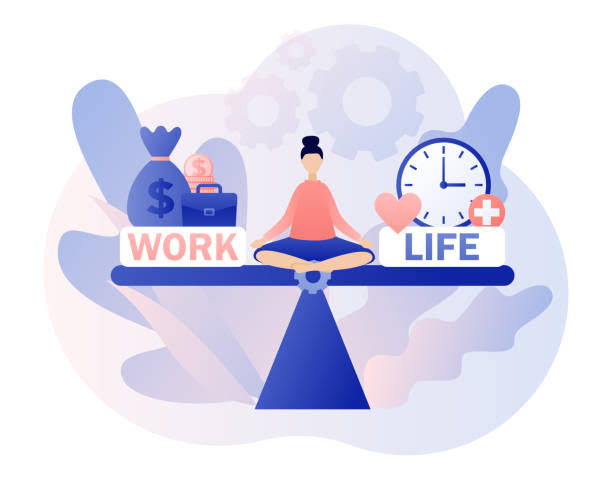In 2025, achieving a healthy work-life balance has become more critical than ever as the lines between personal and professional life continue to blur. With the rise of remote work, digital connectivity, and high job demands, many professionals struggle to maintain harmony between their careers and personal well-being. A well-structured work-life balance strategy not only enhances productivity but also improves mental health, physical wellness, and overall life satisfaction. Building such a strategy involves intentional planning, setting boundaries, and creating habits that support both career growth and personal fulfillment.
Understanding Work-Life Balance
Work-life balance is the state where an individual can effectively manage professional responsibilities while maintaining time and energy for personal life, family, and self-care. It does not necessarily mean equal time for work and personal activities but achieving harmony that prevents burnout and stress.
Key elements of work-life balance include:
- Time Management: Allocating sufficient time for work, rest, and personal activities.
- Boundary Setting: Clearly defining when work ends and personal time begins.
- Energy Management: Ensuring mental and physical energy is not depleted by work alone.
- Personal Fulfillment: Engaging in hobbies, relationships, and self-care alongside career growth.
Understanding these components helps individuals build strategies that create long-term balance and well-being.
Identifying Work-Life Imbalances
Before developing an effective strategy, it is important to recognize signs of imbalance. Ignoring these signs can lead to burnout, stress, and declining performance.
Common indicators include:
- Constant Fatigue from overworking without enough rest.
- Decline in Personal Relationships due to lack of time for family and friends.
- Stress and Anxiety that carry over from work into personal life.
- Loss of Personal Time where hobbies and relaxation are frequently sacrificed.
Acknowledging these issues allows individuals to take corrective measures and prevent long-term negative effects.
Setting Boundaries Between Work and Personal Life
Clear boundaries are essential to prevent work from consuming personal time. With technology keeping employees connected 24/7, actively setting limits is critical.
Effective boundary strategies include:
- Defining Work Hours and sticking to them as much as possible.
- Designating a Workspace at home to mentally separate work from personal life.
- Turning Off Notifications after work hours to avoid unnecessary stress.
- Communicating Availability to colleagues and managers for clear expectations.
These boundaries create mental separation, allowing individuals to recharge outside of work.
Leveraging Time Management Techniques
Time management plays a major role in building a healthy work-life balance. By organizing tasks effectively, professionals can complete work efficiently and create space for personal activities.
Useful time management techniques include:
- Prioritization with To-Do Lists to focus on important tasks first.
- Time Blocking to allocate dedicated periods for work, breaks, and personal time.
- Pomodoro Technique for structured work intervals and rest periods.
- Avoiding Multitasking to maintain focus and reduce stress.
Effective scheduling ensures that productivity does not come at the cost of personal well-being.
Incorporating Physical and Mental Wellness Practices
A healthy body and mind are essential for sustaining a work-life balance. Integrating wellness practices into daily routines supports both personal health and professional performance.
Key practices include:
- Regular Exercise to boost energy levels and reduce stress.
- Mindfulness and Meditation for mental clarity and emotional resilience.
- Adequate Sleep to restore energy and improve focus.
- Healthy Nutrition to maintain overall physical health.
These practices help individuals stay energized, positive, and better equipped to manage work demands.
Embracing Flexibility and Remote Work Wisely
Remote and hybrid work arrangements offer opportunities for better balance but can also blur boundaries if mismanaged.
To maximize the benefits of flexibility:
- Create a Structured Routine to prevent overworking or underworking.
- Use Breaks Effectively to recharge during the day.
- Plan Personal Time Intentionally to ensure family and hobbies are not neglected.
- Maintain Professional Discipline by avoiding distractions during work hours.
When managed well, flexible work arrangements can enhance life satisfaction without compromising productivity.
Utilizing Technology for Balance
While technology can contribute to work-life imbalance, it can also be a powerful tool for maintaining harmony. Smart gadgets, apps, and automation can streamline work and free up time for personal life.
Examples of helpful tools include:
- Task Management Apps like Notion, Trello, or Asana to stay organized.
- Wellness Apps for guided meditation, fitness tracking, or sleep improvement.
- Communication Tools for efficient collaboration, reducing unnecessary overtime.
- Digital Boundaries like automatic “Do Not Disturb” settings during personal hours.
The strategic use of technology enhances productivity without intruding on personal life.
Conclusion
Building a healthy work-life balance strategy in 2025 requires deliberate planning, effective time management, and strong boundaries. By recognizing signs of imbalance, prioritizing wellness, and leveraging technology wisely, professionals can maintain harmony between their careers and personal lives. A well-balanced lifestyle improves productivity, reduces stress, and fosters long-term happiness and success. Prioritizing both work and personal well-being ensures that life remains fulfilling, sustainable, and rewarding.



